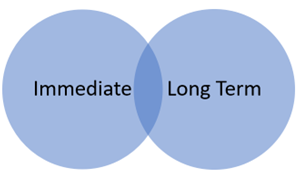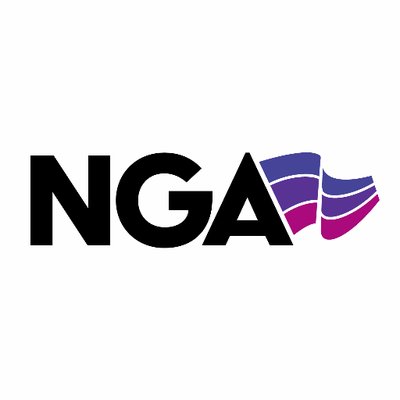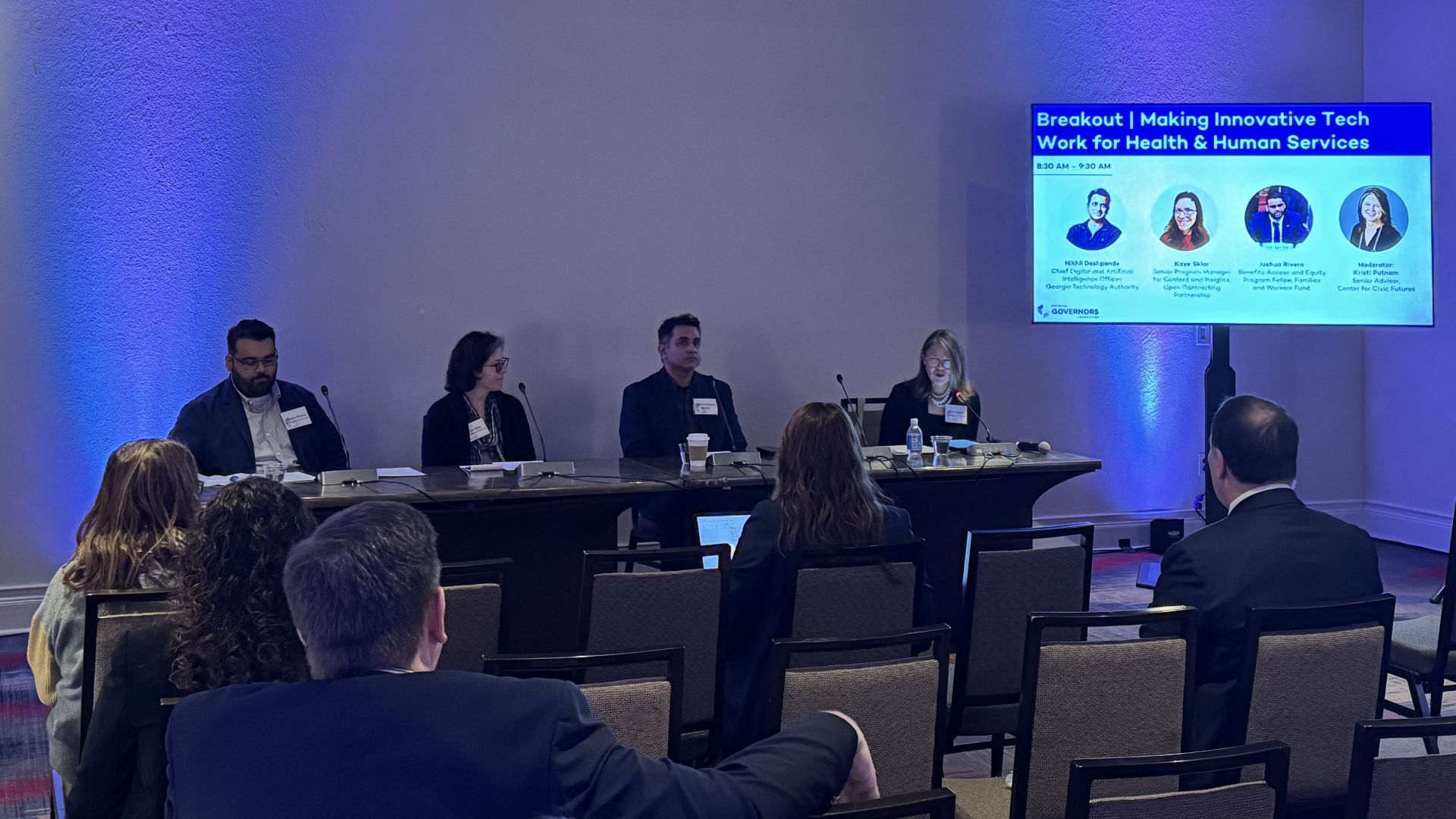This publication documents a series of learning calls, and a roundtable, held by NGA on collateral consequences for youth involved in the juvenile justice system and highlights key policy strategies for Governors’ offices to consider addressing this issue.
(Download)
Introduction
Youth involved in the juvenile justice system routinely face a variety of repercussions beyond detention. Although some of these may be directly related to the violation that occurred, there are many other secondary effects that can result from their system involvement. These secondary repercussions, or collateral consequences, can negatively impact youth and their families upon even the lowest level of engagement with the juvenile justice system. Such side effects can restrict a youth’s ability to recover and develop into a productive and self-sustaining adult citizen.
To better understand the range of collateral consequences youth may face, NGA conducted a series of learning calls and hosted a virtual roundtable titled “Strategies to Address the Needs of Juveniles Impacted by Collateral Consequences” during the fall of 2022. This roundtable convened national, state, and local subject-matter experts to explore the breadth of collateral consequences faced by justice-involved youth, the challenges and barriers policymakers face when addressing these consequences and policy options state leaders may consider to mitigate the negative effects that may result when youth interact with the juvenile justice system. This publication documents these high-level discussions and highlights key policy strategies for Governors’ offices to consider addressing this issue.
Key Takeaways
- Justice-involved youth face a diverse range of collateral consequences that can have both immediate and long-term impacts on their well-being.
- Developing a non-punitive, community-based, trauma-informed approach that is supported by key stakeholders is key to reducing collateral consequences for justice-involved youth.
- Governors’ offices can mitigate the challenges faced by policymakers seeking to address this problem by bringing attention to the issue, encouraging collaboration, building consensus among key stakeholders and proposing legislation addressing specific collateral consequences through targeted policies or comprehensive reform.
Understanding Collateral Consequences
The term collateral consequences refers to the adverse effects experienced by youth and their families as a result of an interaction with the juvenile justice system, including: arrest, referral, intake, detention, adjudication, residential placement, probation, and aftercare. Collateral consequences can be especially impactful for youth and their families who are from racially marginalized or low socioeconomic backgrounds. These consequences can have lasting and sometimes unexpected effects on a youth throughout their life, resulting in continued adverse outcomes that reach well beyond the original incident. Families of youth involved in the juvenile justice system may also face collateral consequences, including financial penalties, restricted housing availability, and criminal charges if the state holds the parent or guardian responsible for the youth’s conduct.
Categories of Collateral Consequences

The impact and duration of collateral consequences vary; however, they can generally be categorized based on whether they emerge in the immediate or long-term, as defined below. Note the following list of examples is not intended to be exhaustive and entails some overlap between the two categories. Additionally, these examples described below can have a compounding effect on a youth or their families; hindering an individuals’ economic or social opportunities in one area (employment, education, housing, etc.) can cause the loss or restriction of other current or future opportunities. Thus, the longer a youth remains involved in the juvenile justice system, the more potential collateral consequences they likely will face.
Immediate impacts include consequences that occur simultaneously or shortly after the youth’s involvement with the juvenile justice system. Immediate impacts can include, but are not limited to:
- Financial Penalties – Fines, fees and restitution constitute a significant burden on youth and their families, particularly those from low socioeconomic backgrounds. Nearly every state imposes some form of financial cost onto youth and their families. Financial penalties can also include lost earnings and other costs associated with attending juvenile court hearings or other proceedings.
- Public Benefits – If the youth is detained or placed in a secure facility, the youth’s family may be denied government assistance as part of some needs-based programs, including Supplemental Security Income (SSI), Supplemental Nutrition Assistance Program (SNAP), Temporary Assistance to Needy Families (TANF) or Medicaid assistance for the child.
- Driver’s License Suspension – Youth who are adjudicated may have their driver’s license suspended by the state as part of or as a consequence of their sentence. This can occur even prior being eligible for a driver’s license.
- Firearm Possession Restrictions – Youth who are adjudicated in juvenile court may have their ability to possess firearms restricted by the state as part of or as a consequence of their sentence. This can limit a youth’s future employment opportunities or restrict their ability to engage in recreational activities that involve the use of a firearm.
Long-term impacts are those that have lasting or extensive effects on youth that linger well beyond the conclusion of their system involvement. Long-term impacts can include, but are not limited to:
- Economic Mobility – Involvement in the juvenile justice system may impact the youth’s ability to obtain employment, including job licensing, college enrollment and/or entry into vocational training programs. They may face additional challenges or barriers to entering certain types of career paths, receiving loans or financial aid or facing discrimination by employers who ask about prior history of adjudications or system involvement.
- Record – Youth who become involved in the juvenile justice system often acquire a juvenile court record or a record of an adjudication. Contrary to common perception, these records are often not confidential and may be accessible to employers and others, even after a youth turns 18 or concludes their juvenile court supervision or incarceration. This record can have compounding harmful effects on the youth’s access to housing, job prospects and certain public benefits. In states without automatic expungement laws, youth may face significant difficulties in altering this record, including challenges with navigating the system, paying fees for the expungement process and receiving legal representation. Even in states with automatic expungement, youth may still experience repercussions from having information about their juvenile system involvement maintained in departments with decentralized or inconsistent reporting requirements.
- Loss of Support Network – The natural support from family and communities may erode when a youth is involved in the juvenile justice system. Although some youth might return home and reestablish connections, many lack a formal or informal support system upon reentry, making transitioning to adulthood difficult. This lack of support is further complicated by any trauma they acquired as part of their system involvement.
Some collateral consequences may have both immediate and long-term impacts. Examples can include, but are not limited to:
- Housing – As an immediate impact, youth and particularly their families may face difficulties finding or retaining housing after their involvement with the juvenile justice system. This includes Section 8 housing and federal Department of Housing and Urban Development (HUD) housing assistance once the youth is released from a detention or correctional facility. In other circumstances, a youth’s system involvement or arrest can be grounds for eviction for their family. The risk of losing housing can create a challenge for the family in accepting the youth back into the household upon reentry, thus delaying discharge and integration back into the community. Certain housing program policies can create significant challenges for youth subsequently placing them in high-risk situations due to housing program ineligibility. This is particularly true for the HUD standard as it requires youth to be homeless upon reentry before they are eligible for certain assistance. Furthermore, juvenile records that are included in background checks for rental housing applications can cause loss of future housing opportunities, including access to public housing vouchers.
- Employment – As an immediate impact, youth may face a loss of employment while incarcerated and a loss of employment opportunities upon reentry due to conditions set by their parole or probation or difficulty in obtaining a job following interactions with the juvenile justice system. In the long-term, youth might face difficulties with acquiring licensure for certain careers, reduced job eligibility or have lowered earnings potential due to their system involvement. This includes barriers to entering military service and updating immigration status for youth who are non-citizens.
- Education – An immediate impact is the loss of educational placements, such as suspension, expulsion or reassignment, due to laws requiring schools to be notified when a student enters the juvenile court system. This disruption in their education is often not fully offset by education programs made available during their incarceration. Programs that are “conditionally” offered or require an eligibility determination may result in some youth being unable to access services. Additionally, youth might face long-term difficulties with enrolling in higher education or pursuing certain types of degrees due to their system involvement. Youth may also experience challenges returning to school because of state financial restrictions, such as difficulty obtaining scholarships. Loss of educational opportunities can cause delays in skill development, creating further barriers to future economic mobility and employment opportunities.
- Trauma and Continued Stigma – Youth experience trauma when they are moved through a punitive system that lacks adequate services or otherwise fails to meet their needs. Many youth involved with the juvenile justice system suffer from Post Traumatic Stress Disorder (PTSD). Studies have found youth experience negative psychological symptoms, such a thoughts of hopelessness, as a result of exposure to trauma, which strengthens their likelihood of court involvement. Trauma can be experienced anytime during a youth’s involvement with the juvenile justice system, and the impact of these experiences can continue to cause harm well after the youth’s system involvement has concluded. Long-term adverse effects may be psychological, social and biological. These effects can have long-term consequences, including increased risk of future delinquency and adult criminal justice system involvement, poor educational performance, increased risk of substance abuse and greater risk for chronic disease.
Policy Solutions and Considerations
States have identified several strategies to reduce collateral consequences for justice-involved youth, which can fall into one of two categories: comprehensive reform and targeted policies addressing a specific type of collateral consequence.
Comprehensive Reform
A comprehensive reform approach can mitigate collateral consequences through system-wide change, which may necessitate multi-agency collaboration. The problems existing in a juvenile justice system that give rise to the need for comprehensive reform can often be attributed to lack of funding or community support, lack of understanding of the unique challenges facing justice-involved youth and the existence of policies that perpetuate collateral consequences. A comprehensive reform approach may not alleviate all consequences; however, the overall effect can be reduced.
Comprehensive reform measures are most successful when paired with a trauma-informed response, sufficient state-allocated funding and community-based support. A trauma-informed response ensures the needs of youth are properly addressed by the juvenile justice system in a way that does not cause further harm. This also includes identifying youth who may be victims of a crime or who need to be directed to specialized services. Sufficient state-allocated funding can ensure adequate support for necessary services for justice-involved youth, such as education and vocational training programs, housing and access to counsel. Finally, community-based support services provide stability to the youth’s family and neighborhood, which may bolster overall positive outcomes. Examples of comprehensive reforms can include:
- Improving Data Systems – Enhanced data collection and reporting requirements using modern or upgraded technology can benefit youth by creating a more unified, coordinated service response within the juvenile justice system. To develop a successful data collection program, state leaders should identify the necessary stakeholders, reach consensus on what metrics will be tracked and reported, and ensure they are being reported consistently between relevant agencies. For example, the Michigan Task Force on Juvenile Justice Reform recently approved a comprehensive set of reforms based on data-driven recommendations.
- Raising the Age – Collateral consequences can be reduced by providing a ceiling and floor age for being adjudicated in a juvenile court. Providing a ceiling age involves eliminating automatic transfers for sending a juvenile to adult court and making transition age youth eligible for juvenile court. Placing a floor on the age involves setting a minimum age for youth to be eligible for adjudication in juvenile court. To date, most states have enacted “Raise the Age.” Beyond raising the age to 18, some states have gone further to expand these policies to young adults between ages 18-25.
- Diversion & Deflection – Diversion programs prevent youth from acquiring a record by directing them toward a service-based response that prevents the youth from entering the adjudication process. Benefits of diversion programs include increasing cost effectiveness, reducing trauma through restorative practices and continuing supportive services for the youth after the conclusion of their system involvement. Although diversion programs can vary widely in implementation, they are most effective when they ensure services, supports and opportunities offered are voluntary, non-punitive and have limited eligibility requirements for enrollment. Success of these programs also relies on effective training on diversionary tactics for those who serve as the first point of contact for youth, such as law enforcement and school personnel. Although diversion programs do not entirely remove the harm of a youth’s initial contact or system involvement, they can greatly eliminate the collateral consequences associated with receiving an adjudication for a misdemeanor or certain felonies. State examples of diversion programs include Idaho, which uses assessment centers and crisis centers to direct youth towards services and Kansas, which has recently enacted comprehensive legislation to limit the detention of youth in correctional facilities. Diversion further reduces contact with the juvenile justice system. An alternative for diversion is deflection, which creates an alternative pathway to arrest and detention available at the beginning of their system involvement.
- Reentry – Effective reentry plans are integral to the success of youth upon leaving the juvenile justice system. Reentry plans can include support from transitional facilities, reentry coordinators and individual case managers who are equipped to provide help to youth and their families for housing, food, mentoring, employment and school. Successful reentry planning starts early (many months before scheduled release), responds to the individual needs of the youth and requires effective coordination between state agencies and service providers. The goal of reentry planning is to ensure the youth will be stable upon release and will have sufficient support until the youth is reintegrated into the community. For example, New Jersey recently implemented a two-year pilot program to provide support for youth being released from a Juvenile Justice Commission facility and other youth who might be at risk of further juvenile justice system involvement.
Targeted Policies
When evaluating strategies to reduce collateral consequences, states can also consider addressing targeted policies within a state’s juvenile justice system that create or mitigate, either directly or indirectly, collateral consequences for youth. Targeting specific policies can be an effective alternative to comprehensive reforms as a narrow focus can ease or expedite adoption and implementation. While targeted reform does entail focusing on a narrower set of outcomes, the impact can still be substantial, and can help promote momentum to take larger, more coordinated steps. Such policies may include:
- Removing Financial Penalties – Fines and fees levied against youth can cause a broad range of harmful effects on the youth as well as their parents and extended family, who often bear the financial burden. Reducing or eliminating fines or fees can reduce the impact of juvenile justice system involvement for youth from marginalized or low socioeconomic status households who are most at risk of harm. For example, in New Mexico, fines and fees related to certain offenses committed by youth were removed through recently enacted legislation.
- Providing Educational Opportunities – Policies enhancing the availability of academic or vocational training can address the gap in educational opportunities for justice-involved youth. These opportunities can begin while youth are still in confinement settings. For example, a training course for trade, vocational or life skills only offered to youth preparing to be discharged from incarceration could be offered to other youth who benefit from this critical opportunity for rehabilitation. For example, Utah provides Youth-In-Custody education services to justice-involved youth through partnerships with local school districts and through the Higher Education for Incarcerated Youth program, through which youth may obtain college credits from a state-run university while incarcerated. Additionally, the American Rescue Plan Act (ARPA) provides state and local communities with over $160 billion to support postsecondary and career technical education for justice involved youth.
- Creating Supports for Older Youth Upon Reentry – Older youth approaching the age of adulthood often face additional consequences for their system involvement, including long-term impacts on their education and career opportunities. Additionally, courts are more likely to charge or waive older youth into adult court for any crimes committed. Thus, ensuring support both pre-discharge and upon reentry is needed to fully address collateral consequences for this population. A variety of program services or models may be considered for this group, including comprehensive discharge planning, pre-release programs, drug rehabilitation and vocational training, work programs, housing, mentoring and life skills training.
- Providing Access to Housing – Older youth can face a variety of challenges when attempting to obtain stable housing. Youth may experience discrimination from property owners and lack access to supportive housing services upon discharge. Access to housing has also been addressed through federal HUD policy, which has moved away from transitional housing (where individuals receive short-term assistance) towards rapid rehousing (where individuals receive longer-term help). Additionally, HUD has announced $145 Million in funding to address the needs of youth experiencing homelessness. States have also taken steps to expand their housing assistance programs for justice-involved youth and young adult populations. For example, Utah offers voluntary services to provide youth with needed supports, which may include housing up through age 25.
- Increasing Access to Record Sealing, Expungement, and Vacatur – Allowing an adjudication to be removed from a record creates numerous benefits for youth, by means of expanded housing, employment, and educational opportunities, and states have used varied approaches to provide youth with opportunities for record sealing and/or expungement. As of 2020, at least 13 states and the District of Columbia “have limited provisions that expunge juvenile records.” Some states have created specific mechanisms for automatic expungement, which creates a standardized system across the state. The Clean Slate Initiative program provides a model template, which is focused on expanding opportunities for expungement of criminal convictions for adult offenders. By providing youth with access to an attorney post-incarceration or post-adjudication, the application process for expungement can be significantly less burdensome.
Key stakeholders for juvenile justice reform can include: state and local law enforcement, prosecutors, member of the media, judges, school personnel, and community leaders. When collaborating with these stakeholders, policymakers may consider the following:
- Providing education and training on collateral consequences. Policymakers can build consensus through awareness campaigns and trainings.
- Connecting directly with stakeholders on policy solutions. Through effective outreach, policymakers can build consensus around actionable policy solutions and remedy concerns about policy proposals prior to their formal introduction. Stakeholder engagement should begin early to ensure that stakeholders are adequately consulted.
- Identifying a champion. In some states, key policy changes were made possible through the vocal support of a key individual within a group of stakeholders.
Considerations for Governors and State Agencies
When implementing policies to reduce the impact of collateral consequences on justice-involved youth, Governors and state officials may want to consider the following strategies:
- Strengthening Interagency Partnerships and Stakeholder Collaboration – Policymakers seeking to mitigate collateral consequences may face resistance from a variety of stakeholders. By building relationships between state policymakers, employers, stakeholders and youth with lived experiences, Governors can help build awareness on the challenges facing justice-involved youth and establish consensus for actionable policies. Furthermore, by connecting relevant agencies, Governors can ensure youth receive the full range of care and services available to them from their first contact with the justice system to their successful reentry.
- Introducing Legislation Addressing Collateral Consequences – Governor’s offices may consider supporting or proposing legislation creating programs addressing a particular type of collateral consequence or proposing systemic reform to the juvenile justice system.
- Partnering with Local Non-Profit Service Providers – Governors may provide local service providers with institutional and financial support to ensure youth have access to necessary services. This support may involve early coordination between non-profits, agency staff, and other key partners.
- Creating a Task Force, Working Group, or Oversight Committee – Governors can create a task force or other group to convene interested stakeholders, gain a better understanding of the unique collateral consequences facing youth in their state, and build consensus towards actionable solutions to resolve these consequences. Finally, Governors can provide guidance throughout the process to support the goals of the group and ensure they follow through on any collective decisions.
- Supporting Community Based and Trauma Informed Methods for Engaging Youth – Governors may be able to reduce youth involvement in the juvenile justice system by creating state-wide support systems that prevent them from entering the system in the first place. Beyond state-wide support, Governors may enhance access to local community-based services. This may include funding local services with state or federal grants, training service providers, or conducting gap analyses where communities can improve continuum of care. Trained service providers can help identify at-risk youth, provide mental health and other services to them, and help connect youth to other services within their communities.
This paper was developed by:
- Jessica Moise, Senior Policy Analyst, National Governors Association, jmoise@nga.org
- Elise Simonsen, Ph.D., Senior Policy Analyst, National Governors Association, esimonsen@nga.org
- Maria Kearl, Policy Analyst, National Governors Association mkearl@nga.org
For questions or more information, please contact the authors.
This report was funded by the Annie E. Casey Foundation. The views expressed are those of the authors and do not necessarily reflect the opinions of the Annie E. Casey Foundation.












